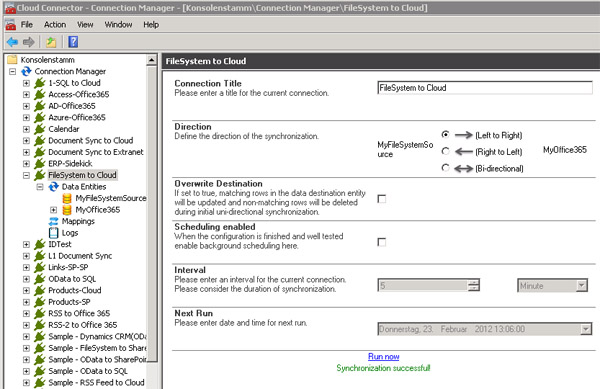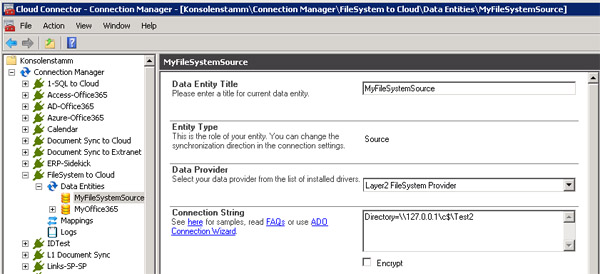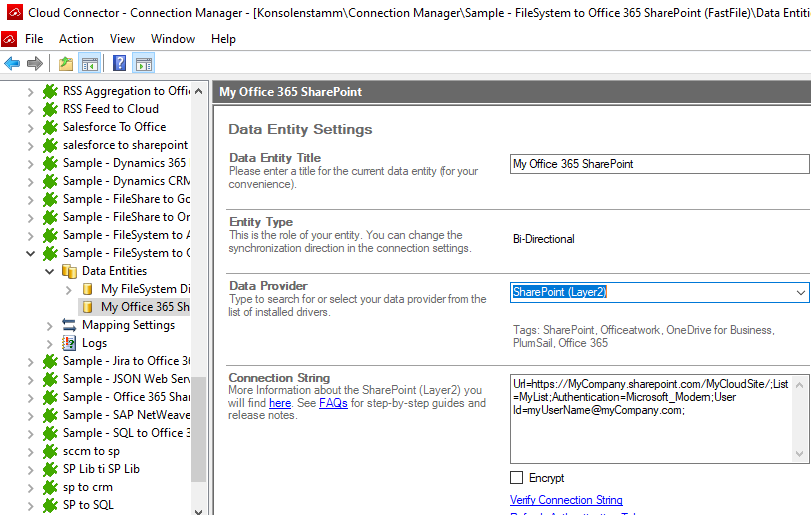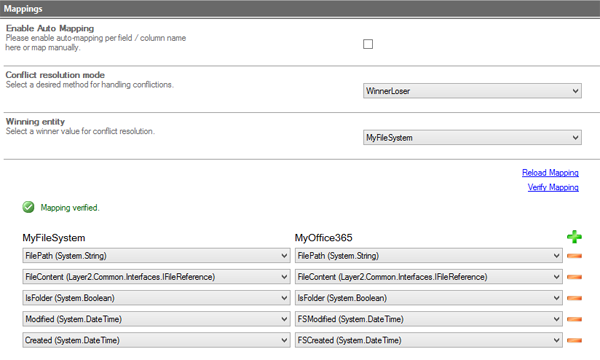We are here to help. Contact us and our consulting will be happy to answer your questions.

If you are looking for a data and file synchronization tool, you should try Layer2 Cloud Connector. This tool is intuitive, secure and with no data limit. You can synchronize automatically in the background, one way or two way - and you can use it even without IT knowledge.
Generally, when you are moving to the Microsoft Office 365 and SharePoint Online cloud, there are a lot of reasons to keep your local file system, for example:
But you don't have to miss the benefits of the cloud, like web-based search, versioning, change notifications, workflows, mobile access etc. Best to set up a hybrid scenario in this case. You can centrally synchronize pre-selected parts of your local file system, and even file server Shares, network drives or NAS directories with a SharePoint Online, Office 365 or OneDrive for Business document library in the cloud.
Let's have a look how you can setup this step-by-step using the Layer2 Cloud Connector to overcome the limitations of the free Microsoft OneDrive for Business Client.
Assuming you have a file system, mapped network drive like this with some files and folders:
Fig. File System to synchronize with the Microsoft Office 365 Cloud - also works for local folders.
You first have to setup the connection definition in the Cloud Connector, for example "FileSystem to Cloud":

Fig. Connection definition for Filesystem to cloud replication, unidirectional in this example.
Please note:
As a next step you have to setup the data source of the newly created connection as follows.

Fig. Example file system data source configured for replication to Office 365.
Please note:
Now you can create a SharePoint library in the clound, e.g. "FileSystem" in this sample. As a next step you have to setup the data destination of the newly created connection as follows.

Fig. Example data source to replicate a part of a file system to Office 365
Please note:
To map the file system files and metadata to your SharePoint library you can simply use the "Auto-Mapping" feature or map the fields manually - as shown below.
 Fig. Field mapping example to sync
file system meta data to a SharePoint library.
Fig. Field mapping example to sync
file system meta data to a SharePoint library.
Please note:
When all connection settings are done and verified successfully, go back to the configuration settings and run the connection first time. After all files are tranferred, you can benefit from your local data replicated to the Cloud.
Fig. Example of SharePoint library with file system content replicated.
Please note:
Explore frequently asked questions by topics.
Take the next steps!